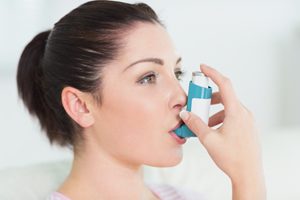
Fall is here, and even with the recent shift in weather, people with allergies are still suffering from seasonal triggers. Whether it is mold, dust or the extended ragweed season, people all over the country are busy trying not to let their seasonal allergies get the best of them.
According to the Dr. James Sublett, president-elect of the American College of Allergy, Asthma and Immunology (ACAAI), "The most important reminder we can give people is to start taking their fall allergy medication two weeks or so before symptoms usually begin. You should also continue your medication for two weeks after the first frost. Because of nasal and eye symptoms associated with ragweed allergies, symptoms can linger after pollen is no longer in the air."
But that's not all. Here are a few tips for getting through fall allergy season:
Air: While the weather outside is getting chillier, it's not downright cold yet. Although it might be tempting to open the windows for some fresh air, by doing that you are just inviting allergens into your home. Use air conditioning or a fan, and leave windows closed. The same is true for when you are riding around in the car.
Laundry: During the warmer parts of the year, many people like to hang their laundered clothing and bedding outside to dry in order to save on energy costs. But doing this when there are high pollen counts outside is not wise. Pollen can easily cling to even hypoallergenic bedding, clothes and towels, so when you bring those dried items indoors, you are also introducing those triggers into your house.
Outdoor time: Pollen is most prevalent between the hours of 5 a.m. and 10 a.m., so avoiding outdoor activities early in the morning is a good idea for limiting the impact of seasonal allergens. Additionally, any activity where you are kicking up dirt or dust is bound to trigger your symptoms. If you know you are going to be carrying out an activity or chore that will generate a lot of pollen, mold or dust, be sure to wear a face mask to reduce the inhalation of dangerous spores.
There are plenty of methods of allergy control on the market. It is especially important that people who suffer from these symptoms take care of them before the time of impact because it is common for allergy sufferers to also have asthma as well. Allergy symptoms can easily trigger a dangerous asthma attack, so it is better to prevent such an occurrence.
If you are looking for the latest products in allergy prevention, visit Allergy Be Gone today. For more information on allergy and asthma news, follow along with this blog for regular updates.









